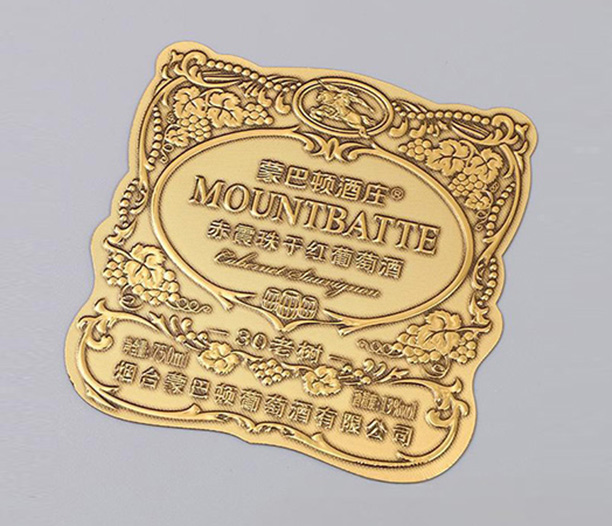Have you ever walked through a forest and wondered, "What kind of tree is that?" You're not alone. Tree identification is a rewarding skill that deepens your connection with nature, and it all starts with knowing what to look for. Tree identification signs are the visual and structural clues that each species exhibits, acting as a unique fingerprint in the plant world. By learning to read these signs, you can accurately name trees without needing fancy equipment. This article will dive into five essential tree identification signs that are practical, easy to observe, and highly effective. Whether you're a hiker, gardener, or curious learner, mastering these tree identification signs will transform your outdoor experiences. Let's explore the key aspects that make tree spotting both fun and educational.

Understanding the Basics of Tree Identification Signs
Before we get into the specifics, it's important to grasp why tree identification signs matter. These signs are nature's way of communicating a tree's identity through its physical characteristics. They include everything from leaves and bark to flowers and overall shape. By systematically observing these features, you can distinguish between species like oaks, maples, and pines. Many people think tree identification requires expert knowledge, but in reality, it's about paying attention to details. In the following sections, we'll break down five fundamental tree identification signs that serve as your go-to toolkit. Each sign builds on the others, so combining them will give you a confident approach to naming trees in any season or setting.
1. Leaves and Needles: The Most Common Tree Identification Signs
When people think of tree identification signs, leaves often come to mind first. They are highly visible and vary dramatically between species, making them a primary clue. Leaves can be broad and flat (as in deciduous trees) or needle-like and scaled (as in conifers). To use leaves as effective tree identification signs, examine their shape, margin (edge), arrangement on the branch, and vein patterns. For instance, maple trees have palmate leaves with lobed edges, while oak leaves feature deep sinuses and a robust structure. In conifers, needles might be clustered in groups, like in pines, or singly attached, as in firs. Additionally, leaf color and texture change with seasons, offering year-round clues. By focusing on these leaf characteristics, you can quickly narrow down possibilities. Remember, leaves are among the easiest tree identification signs to start with, especially for beginners, because they are abundant and distinctive.
2. Bark Texture and Color: Reliable Tree Identification Signs in All Seasons
Bark is one of the most reliable tree identification signs because it remains visible throughout the year, even when leaves have fallen. The bark's texture, color, and pattern can tell a vivid story about a tree's age and species. For example, the shaggy, peeling bark of a birch tree is unmistakable, while the smooth, gray bark of a beech tree stands in sharp contrast. Some trees, like sycamores, have bark that exfoliates in patches, revealing a mosaic of colors underneath. As trees mature, their bark evolves—young trees might have smoother bark that becomes furrowed or ridged with age. To use bark as one of your key tree identification signs, run your hand over it to feel its roughness or smoothness, and note any unique markings like lenticels (small pores) or deep grooves. This sign is particularly useful in winter when other features are less obvious, making it a staple for year-round tree spotting.
3. Tree Shape and Silhouette: Visual Tree Identification Signs from a Distance
The overall shape and silhouette of a tree provide macro-level tree identification signs that you can often spot from afar. Trees develop distinct growth habits based on their species and environment, resulting in characteristic forms such as columnar, spreading, weeping, or pyramidal. For instance, a spruce tree typically has a conical shape with dense branches, while an elm tree might display a vase-like form. These shapes are influenced by factors like sunlight competition and wind patterns. When observing tree shape, consider the crown density, branch angle, and height. In open areas, trees might grow wider and more symmetrically, whereas in forests, they may stretch upward with narrower crowns. Using silhouette as a tree identification sign is especially helpful when you can't get close to the tree, allowing for quick assessments during drives or hikes. Pair this with other tree identification signs for a more accurate ID.
4. Flowers, Fruits, and Seeds: Seasonal Tree Identification Signs
Flowers, fruits, and seeds are seasonal tree identification signs that offer precise clues during specific times of the year. These reproductive parts are often unique to each species and can be highly distinctive. For example, the vibrant blossoms of a cherry tree in spring or the acorns produced by oak trees in fall are telltale signs. When examining flowers, note their color, size, arrangement, and blooming period. Fruits and seeds—such as samaras (winged seeds) on maples or pods on locust trees—can persist into winter, extending their usefulness. Even the presence of cones on conifers, like the large, woody cones of pines, serves as a key identifier. Since these tree identification signs are temporary, they require timing your observations to the right season. However, when available, they can confirm a tree's identity with high accuracy, making them invaluable for detailed studies.
5. Twigs, Buds, and Branching Patterns: Detailed Tree Identification Signs
Twigs, buds, and branching patterns are often overlooked but highly detailed tree identification signs that provide insights even in dormancy. Twigs—the young branches—can reveal a lot through their color, texture, and lenticels. Buds, which are embryonic shoots, vary in size, shape, and arrangement (opposite or alternate). For instance, maple trees have opposite branching with paired buds, while ash trees show similar patterns. In contrast, trees like oaks have alternate branching with single buds. Additionally, some buds are covered in scales or have distinctive colors. By cutting a twig open, you might even observe the pith (center tissue), which can be chambered or solid—another subtle clue. These tree identification signs are particularly useful in late fall, winter, and early spring when leaves are absent. They encourage close inspection and can differentiate between similar species, enhancing your overall identification skills.

Putting It All Together: Mastering Tree Identification Signs
Now that we've covered five core tree identification signs, the next step is integrating them into a cohesive approach. Start by observing the tree from a distance to note its shape and silhouette. Then, move closer to examine the bark and branching patterns. If leaves, flowers, or fruits are present, use them to refine your identification. Remember, no single sign should be used in isolation; the most accurate IDs come from combining multiple tree identification signs. For example, if you see a tree with opposite branching and lobed leaves, it could be a maple, but checking the bark and fruits will confirm it. Practice in different seasons and environments to build confidence. Over time, reading these tree identification signs will become second nature, turning every walk into an engaging detective game. By consistently applying these methods, you'll not only identify trees but also appreciate the ecological stories they tell.
Frequently Asked Questions About Tree Identification Signs
Q1: What are the most beginner-friendly tree identification signs to start with?
A1: Leaves and overall tree shape are often the easiest tree identification signs for beginners. Leaves are highly visible and vary widely between species, while shape can be assessed from a distance without needing close inspection.
Q2: Can I rely on tree identification signs during winter when trees are bare?
A2: Yes, winter is a great time to focus on bark, twigs, buds, and branching patterns—these tree identification signs remain visible and can be very distinctive, helping you identify trees even without leaves.
Q3: How do I avoid confusing similar tree identification signs between species?
A3: To avoid confusion, always cross-reference multiple tree identification signs. For instance, if two trees have similar leaves, check their bark texture or fruit type. Using a field guide or app can also help clarify differences.
Q4: Are there any tools or apps that assist with interpreting tree identification signs?
A4: Yes, apps like iNaturalist, PlantNet, or Leafsnap allow you to upload photos of leaves, bark, or other tree identification signs for instant suggestions. However, learning to observe signs manually improves your skills long-term.
Q5: How long does it take to become proficient at using tree identification signs?
A5: Proficiency varies, but with regular practice, many people become comfortable within a few months. Start with common trees in your area and gradually expand your knowledge by noting tree identification signs on every outing.
By focusing on these five tree identification signs and addressing common questions, you're well on your way to becoming a skilled tree spotter. Embrace the journey—every tree has a story waiting to be discovered through its unique signs.






